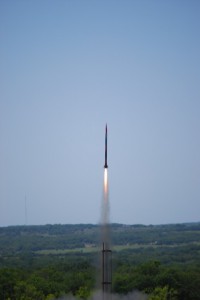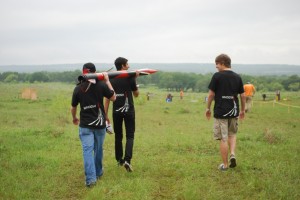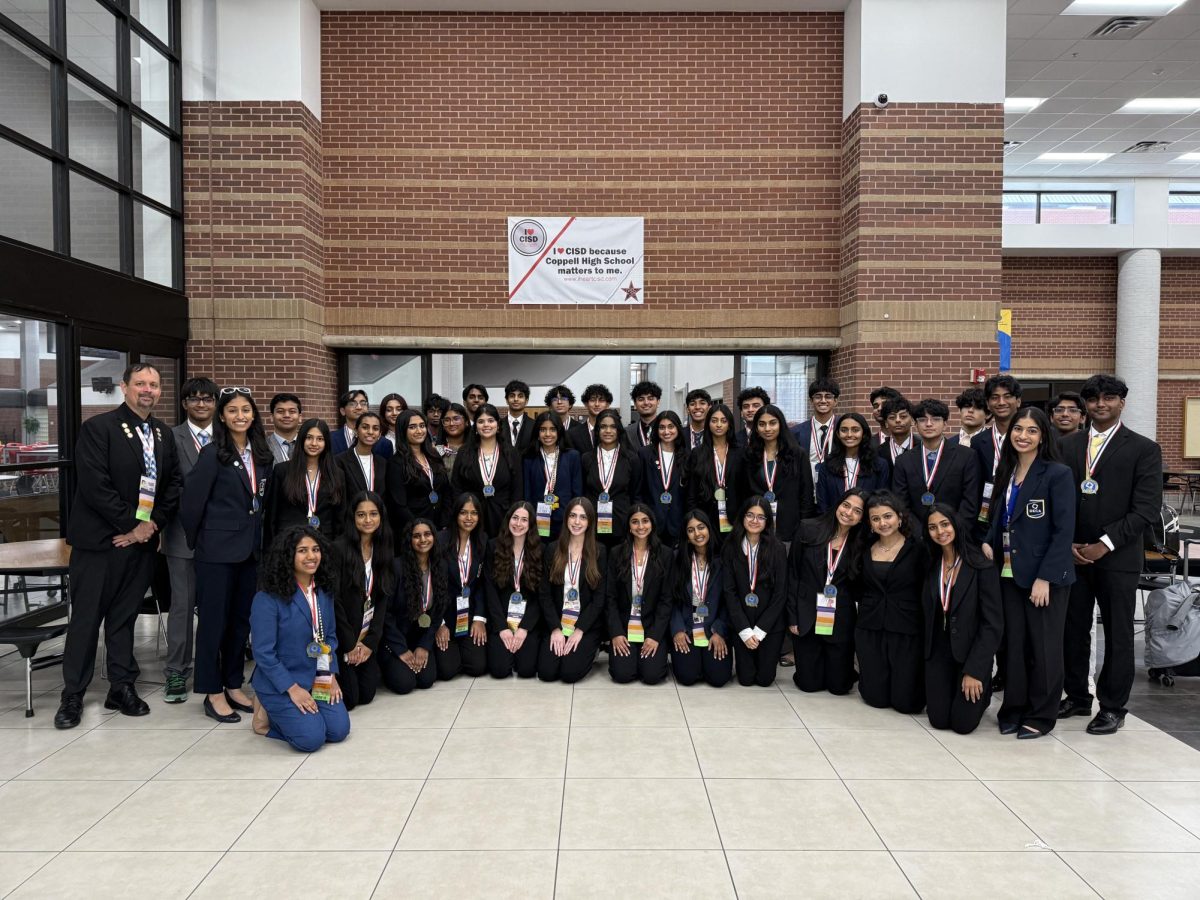by Divya Kumar
News Editor

Thursday and Friday, April 22 and 23, Bill Montana’s Aeroscience Studies (also known as Rocket Studies, or SAS) classes travelled to Fredericksburg, Texas in order to launch the rockets they have been preparing in class for weeks. The junior rocket was designed to carry a one-pound load to an altitude up to a mile, and the senior rocket was designed to exceed the speed of sound while traveling more than two miles, straight into the air.
“It seems like something complicated,” junior SAS member Meera Patel said. “But we’ve been learning about rocketry and physics all year in this class, which have really helped us to design these rockets.”
Each spring, Coppell SAS teams and other Texas rocket programs around the nation, travel to Fredericksburg in order to test their rockets. While there, teams can interact and learn different methods and techniques to rocket building.
“It’s a good way to learn new things about rockets,” junior SAS member Ali Brinegar said. “Usually we learn what we’ve done wrong at competitions against other teams. But this is a good, non-competitive way to gain more insight.”

These projects were begun at the beginning of the spring semester, after one semester of learning about the physics of rockets. This class can be taken by juniors and seniors as a science class, for the basics of physics are taught within it, while applying these methods to real world techniques, such as rocket building. It is required each year students in both the Level One class and the Level Two class, separated usually by juniors and seniors, research, build, design and test by means of launch a high-powered rocket.
The rockets built this year fit into the category of ‘high-powered’ by all means. They used hybrid motors, which burn rubber, which is what the bottom half of the motor is essentially made up of. The top half is a tank that holds nitrous oxide that flows through the burning rubber to cause it to burn even more violently, that provides the thrust for the rocket. Due to the extreme intensity of this thrust, the rocket is able to fly up to high altitudes at rapid speeds.
Another feature of the rockets that marks them as different from the ones that most students envision being sent off is their size. While the practice rockets that have been shot off at school by the SAS teams are usually a foot long, the ones that will be tested in Fredericksburg will be several feet larger.
“It is very gratifying to witness students really getting into their learning and applying themselves to overcome challenges,” SAS teacher Bill Montana said. “To see students experience such a great sense of accomplishment when their rockets blast skyward is a great feeling.”
The SAS students are expected to arrive back to Coppell at 10 PM Friday night. The lessons learned from this launch are likely to aid SAS students look towards improvement, while providing them will a feeling of triumph as they watch the projects they have been laboring over for weeks during and after school launch into the air.








